Gayle Irwin's Blog, page 26
July 12, 2016
Pets Impact Us for Life
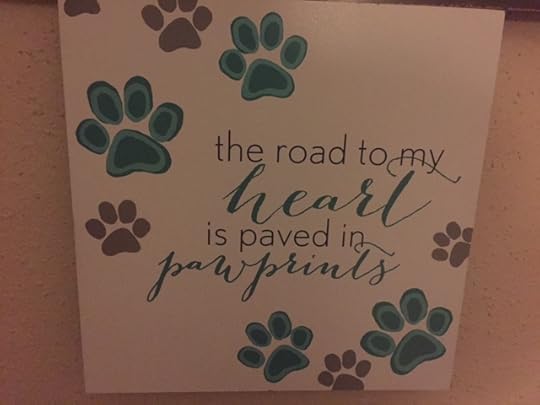 There are two signs in my house that seem to catch people's eyes: “My Therapist has a Wet Nose” and “The Road to My Heart is Paved in Pawprints.” These speak truth into my life and reflect the truth in my life.
There are two signs in my house that seem to catch people's eyes: “My Therapist has a Wet Nose” and “The Road to My Heart is Paved in Pawprints.” These speak truth into my life and reflect the truth in my life.For more than 50 years, pets have impacted my life. From a Labrador retriever that was a hunting dog for my father and a steady pony for my two-year-old growing, unsteady body to the 10-year-old springer/cocker mix that now shares my home, animals have been part of my life. Not just dogs, but also cats, turtles, hamsters, rabbits, even a green reptilian anole lizard and a couple of white pigeons... I was responsible for their care and they provided companionship as well as laughter at times. From butterfly chasing through Iowa fields to explorations of Montana's mountains, from created “ponds” in the kitchen to streams in Wyoming, and from compacted aluminum foil balls to tug-of-war toys, the entertainment, explorations, and education my pets provided remains in the memory banks, if not in Kodachrome photos. My pets have taught me valuable life and faith lessons, tips and inspirations I share in my speaking and writing endeavors.
I share such a story in the newly released Memories from Maple Street: Pawprints on My Heart, an anthology released today by Sundown Press, an imprint of Prairie Rose Publications. Within the pages of this book, readers will be inspired and their own memories of special animals ignited. The book features stories from a variety of writers about a variety of pets. My story is dedicated especially to Sage, the blind springer spaniel who launched my book writing career and impacted hundreds, perhaps thousands of lives through in-person/dog visits to schools, libraries, and bookstores, as well as to Cody, the cocker spaniel my husband and I adopted as a senior pet who had “worn out his welcome” as his body aged and the breeder no longer felt a need to care for him; Cody lived another 7+ years and is also the subject of several books and stories. I learned great lessons from Cody and Sage, including courage, perseverance, loyalty, and self confidence, among so many others. Animals can do that, you know – they can inspire and motivate us, they help us think about others besides our own selves, and they give unconditionally. Is it no wonder they leave pawprints on our hearts and serve as amazing therapists?!
I hope you'll check out Pawprints on My Heart. Visit the publisher's blog, learn more about the book, leave a comment, and you could possibly win a free copy of this delightful read. Go to http://bit.ly/29HtCi3 to read and learn more.
Nearly 80 million U.S. households have pets in the United States, according to the latest statistics from the American Pet Products Assocation. That's a lot of pawprints and therapy -- pets really do impact us humans, oftentimes for life!
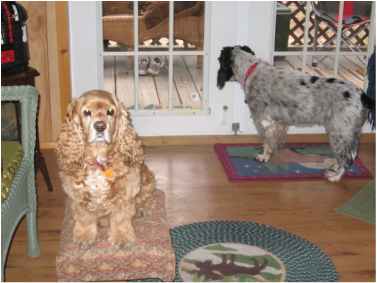

Published on July 12, 2016 18:29
June 28, 2016
Finding Inspiration in Nature: Animals
 I'm a writer, and writers are inspired to write. Perhaps they write romance, perhaps mystery, perhaps nonfiction or stories for children. Whatever "it" is, writers are inspired, moved, called even to write. Artists, whether they paint or make works from clay, are also inspired. As humans, we find inspiration (whether to do good deeds or to somehow be a better human being) via many avenues... and that includes nature.
I'm a writer, and writers are inspired to write. Perhaps they write romance, perhaps mystery, perhaps nonfiction or stories for children. Whatever "it" is, writers are inspired, moved, called even to write. Artists, whether they paint or make works from clay, are also inspired. As humans, we find inspiration (whether to do good deeds or to somehow be a better human being) via many avenues... and that includes nature.I wrote a blog post recently for Writing Wranglers & Warriors, a website for writers and artists, on the subject of inspiration, in particular, being inspired by nature. Yet, even if you don't consider yourself either a writer or an artist, you can find inspiration at the Wrangler site. I wrote the Finding Inspiration in Nature post in two parts, the latest about animals, for that is the subject matter about which I write. Perhaps you, too, will find inspiration in my blog post. Find a segment of it below then continue reading the post at the Writing Wranglers & Warriors website. I hope you enjoy it!
Finding Inspiration in Nature, Part 2: Animals
Last week I wrote about being inspired by nature with regard to landscapes. Whether mountains, valleys, fields, forests, oceans, lakes, streams, city parks, botanical gardens, or your own backyard, you can find refreshment, replenishment, inspiration, and creativity in nature. You can also find inspiration in the creatures which inhabit these spaces, lessons that can be applied to life, and even to writing.
Continue reading by clicking on this link:
https://writingwranglersandwarriors.wordpress.com/2016/06/27/finding-inspiration-in-nature-animals/
Read Part 1, Finding Inspiration in Nature: Landscapes by clicking on the link below:
https://writingwranglersandwarriors.wordpress.com/2016/06/20/finding-inspiration-in-nature-part-1/
What or who inspires you? Do you consider yourself a creative person, and if so, what stimulates that creativity?

Published on June 28, 2016 06:07
June 22, 2016
Celebrate Dogs: Take Fido to Work This Week!
 Friday, June 24, is a special day for dogs and dog-lovers: It's Take Your Dog to Work Day!
Friday, June 24, is a special day for dogs and dog-lovers: It's Take Your Dog to Work Day!Have you ever taken your dog (or other pet) to work? On June 24, you can! (okay the idea with your boss first though!). The Friday following Father’s Day is designated as Take Your Dog to Work Day, a special time set aside by Pet Sitters International (PSI) “to celebrate the great companions dogs make and promote their adoptions.” This marks the 18th year of such a commemoration. In fact, the entire week, starting June 20th, is known as Take Your Pet to Work Week.
According to PSI, this special time “encourages employers to experience the joys of pets in the workplace,” … “to support their local pet community,” and allows “non-pet owners…to witness the special bond their coworkers have with their pets firsthand and be encouraged to adopt a new best friend of their own.”
A CNBC story which ran last fall noted that an increasing number of businesses are allowing employees to bring their pets to work. Firms such as Google, Amazon, and Etsy welcome pets into the workplace and oftentimes find the animals provide stress relief and develop more focused workers (see story at http://www.cnbc.com/2015/10/15/more-firms-allowing-dogs-and-other-pets-in-the-office.html).
Science supports such thoughts. According to many experts, having a pet helps people physically and emotionally; the simple act of petting a dog or cat relieves tension and decreases blood pressure in people. Therapy that animals provide people is important.
Therapy pets visit nursing homes, hospitals, libraries, and other venues. They are also used by many counselors. Petting an animal helps people relax and can bring joy in the midst of suffering and anxiety.
Pets have other jobs as well, including helping the blind and disabled. Guide dogs and service animals allow those who cannot see or are confined to wheelchairs to have a more active and social lifestyle. The positive affect of service animals upon people with PTSD has been well-documented, too; many former military men and women are now experiencing life with a service dog. Sometimes these pets are found in animal shelters; their lives are saved from euthanasia and they are trained to help those with PTSD or who have lost limbs, giving the dogs a new “leash on life” as well. One such organization is Pets for Patriots; another is Pets for Vets.
Other types of jobs dogs have include hunting, herding, and search and rescue. All of these are important functions, and various breeds respond to the call. Some have the natural instinct, but all need some type of training, including basic obedience. Such training benefits all dogs no matter the breed or occupation, even that of companion.
The most important job a pet has is that of friend. Dogs are loyal and loving (cats are a bit more independent, however, they, too, serve the important role of companion). Pets fill a void when people let us down – pets are faithful and authentic. Pets are fun, whether returning a tennis ball or toy mouse in endless games of fetch, hiking a trail, or laying on one’s lap – their adoration and devoted companionship fills one’s heart.
So, during Take Your Pet to Work Week and on Take Your Dog to Work Day, if you’re an employer, consider allowing your workers to bring their furry friends to the office, to the store, or to the plant. If you’re an employee, share this information with your boss and seek permission to bring your faithful four-legged companion to work. Honor the pets who give us so much, who care about us to the moon and back, and share your love of pets with others. Remember the words from the Peanuts characters: “Happiness is a warm puppy!”
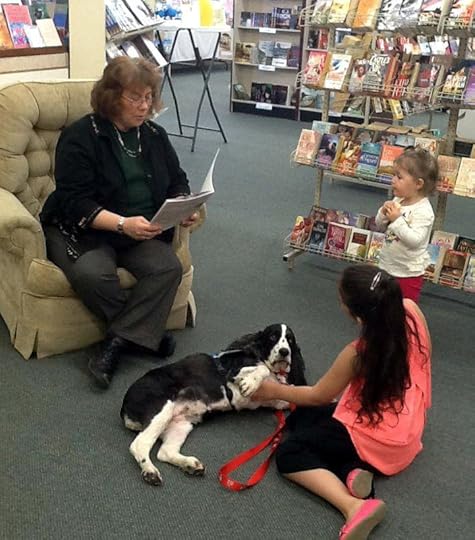
Published on June 22, 2016 20:55
June 5, 2016
Tips for Keeping Your Pet Safe This Summer
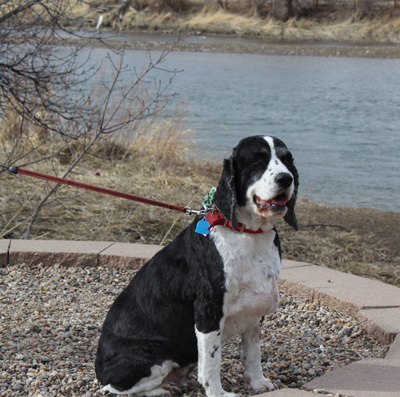 Summer seems to have arrived in many parts of the country. These warming days bring unique safety concerns for our pets. Here are a few tips for enjoying a safe summer with your furry friends:
Summer seems to have arrived in many parts of the country. These warming days bring unique safety concerns for our pets. Here are a few tips for enjoying a safe summer with your furry friends:Ensure your pets’ vaccinations are up-to-date and that heartworm, flea and tick medications have been administered. Summer brings out rabies-carrying creatures, such as skunks and raccoons, and fleas and ticks are abundant this time of year as well. Protect your pets! Consult your veterinarian for more information on heartworm, Lyme disease, rabies and other life-threatening diseases.When planning your dog’s daily walk, seriously consider early morning or later in the evening when it’s cooler and when sidewalks aren’t so hot. If you have to walk mid-day, take a shorter route, and remember that concrete and other paved pathways can burn the pads of a dog’s paws.Don’t leave pets unattended in your vehicle. Cars quickly heat up to dangerous temperatures, especially on warm or sunny days, even with the windows slightly open. Every year hundreds of pets die from being left in vehicles.If you take your dog boating or swimming with you, consider a pet life vest. Contrary to what many people think, not all dogs swim or swim well. Dogs can and do drown. Even the best of swimmers, like Labrador retrievers, can lose their life in the water, especially a swollen, fast-moving river or stream so ensure your pet’s safety in and near the water.If your dog spends time outdoors in a kennel, ensure he has plenty of fresh, cool water and shelter with shade. Rain and thunderstorms can pop up quickly, particularly in the afternoon when you may be elsewhere, such as at work. And, NEVER chain or tie your dog out – lightening striking a nearby tree, heat exhaustion, dehydration and numerous insect bites are just a few of hazards posed to tethered dogs.For your cat’s protection, keep her indoors. Cats can be purr-fectly content indoor pets – they just need is a bit of playtime, a cat tree and other enrichment. Keeping your kitty indoors protects her from rabies from roaming creatures, death by car or dogs, and other safety issues, such as car coolant leaks.Pesticides, weedkiller and other chemicals pose dangerous risks to pets and may even result in death. Ensure your pet cannot get into any of these hazardous products, and highly consider using organic products for your garden and yard.If your pet travels with you, make sure his/her ID tags are on the collar of your pet before traveling – microchips are very helpful, too. And, make sure all information, such as your phone number, is up-to-date. Also, use a leash to walk your pet for its bathroom break at a rest stop. One of the worst ways to ruin your vacation is to lose your pet.Prior to traveling, look into accommodations that accept pets. Here are a few websites that can help you plan your pet-friendly vacation: www.petswelcome.com and www.bringfido.com.If you don’t take your pet on vacation with you, look into hiring a reliable pet sitter. Ask friends or your vet for recommendations or check out a website such as http://www.rover.comNEVER leave your pets home alone if you’re gone for an extended period of time. Even asking friends to “drop by” to feed and water isn’t enough. Things can happen if a pet is left alone for days – running out of water, yard and house destruction, incessant barking which can result in upset neighbors – and possibly a fine to you by animal control.Follow these guidelines and enjoy a safe and happy summer with your pet!
Published on June 05, 2016 19:12
May 13, 2016
Spring Brings Pet Health Concerns
Tulips bloom, songbirds chorus, lilac fragrance filters the air, and rainfall sparks growth and green. Spring has sprung and with it comes outdoor adventures, for both people and pets. As more outings commence, there are also increased health and safety concerns for our pets.
Defend Against Disease
Bats, skunks, and raccoons can carry rabies, and if our pets are bitten and aren’t properly vaccinated, a major health crisis can and often does take place, and it often leads to death. Vaccinate your pets against rabies, parvo, leukemia and other fatal diseases; talk to your vet about prevention.
Heartworm is another very lethal disease, and fleas and ticks can make pets miserable as well as very sick. Prevention is the cure – again, consult with your vet.
Get the Groom On!
Spring brings warmer temperatures and a good grooming can not only help alleviate the flea and tick infestations, but also helps your dog and cat feel more comfortable as those temperatures rise. Trimming hair, cleaning ears, and brushing teeth keeps your furry friend happier and healthier.
Have ID?
With more time spent outside, the opportunity for a pet to get lost rises like the increasing temperature.
Slipping from a leash or harness, high-tailing it over the fence, lost while hiking, or escaping during a thunderstorm – all of these possibilities are concerning. Ensure your pet has a collar with ID tag and/or is microchipped and that way can be returned home more quickly. Alleviate your anxiety of your pet’s potential disappearance by having proper, and accurate, identification on your furry friend.
For more information and a good read about spring pet health and safety concerns, visit http://goodnewsforpets.com/spring-pet-safety-tips/.

Defend Against Disease
Bats, skunks, and raccoons can carry rabies, and if our pets are bitten and aren’t properly vaccinated, a major health crisis can and often does take place, and it often leads to death. Vaccinate your pets against rabies, parvo, leukemia and other fatal diseases; talk to your vet about prevention.
Heartworm is another very lethal disease, and fleas and ticks can make pets miserable as well as very sick. Prevention is the cure – again, consult with your vet.
Get the Groom On!
Spring brings warmer temperatures and a good grooming can not only help alleviate the flea and tick infestations, but also helps your dog and cat feel more comfortable as those temperatures rise. Trimming hair, cleaning ears, and brushing teeth keeps your furry friend happier and healthier.
Have ID?
With more time spent outside, the opportunity for a pet to get lost rises like the increasing temperature.
Slipping from a leash or harness, high-tailing it over the fence, lost while hiking, or escaping during a thunderstorm – all of these possibilities are concerning. Ensure your pet has a collar with ID tag and/or is microchipped and that way can be returned home more quickly. Alleviate your anxiety of your pet’s potential disappearance by having proper, and accurate, identification on your furry friend.
For more information and a good read about spring pet health and safety concerns, visit http://goodnewsforpets.com/spring-pet-safety-tips/.

Published on May 13, 2016 10:15
May 4, 2016
Think Kindness, Think Reading: Inspire Kids and Others
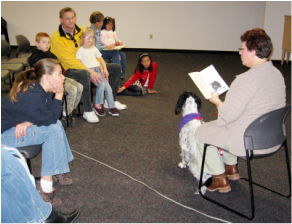 Be Kind to Animals Week
overlaps with Children's Book Week. Kids can learn kindness to animals via reading. They also learn kindness through observation and interaction. During this special time, we can encourage children, other adults, as well as ourselves to be a bit kinder … and to read more.
Be Kind to Animals Week
overlaps with Children's Book Week. Kids can learn kindness to animals via reading. They also learn kindness through observation and interaction. During this special time, we can encourage children, other adults, as well as ourselves to be a bit kinder … and to read more.There are many wonderful books available for children about animals. Within those pages, they can learn how to take care of animals as well as how pets take care of people. For a listing of great children's books about pets, visit http://dogtime.com/dog-health/general/5877-top-10-kid-friendly-pet-books and http://www.amazon.com/Best-Sellers-Books-Childrens-Pet/zgbs/books/2853.
“Teach the children well,” are words in a Crosby, Stills and Nash song (see a YouTube video at https://www.youtube.com/watch?v=ztVaqZajq-I ). Teaching children kindness toward people and pets offers great rewards for those kids, including opportunity to do good in a community and the opportunity to make new friends. In fact, according to a research study called Kindness Counts, “When kids performed acts of kindness or took notice of the pleasant places they visited, their happiness quotient increased ... (and) … they gained an average of 1.5 friends during the month-long period” (see related article at http://www.rootsofaction.com/art-kindness-teaching-children-care/ ).
What are some ways we can be kind to pets and people, and how can we more greatly instill kindness in others, including children? The list of ideas is endless, but here are some suggestions:Take care of your own pets. Ensure the animals under your care have clean water, plenty of food, shelter, and attention. Just like young children, our pets thrive from our caring, concern, devotion, and responsibility toward them. Children helping to care for the family pet learn responsibility as well as kindness.Help pets in need. Volunteer at and/or donate to local and regional animal rescue and welfare organizations. These non-profits need the help and support of their community to do their job, and who is the community? All of us!Another way to help animals in need is to create toys and other things for shelter pets. Items such as fleece blanket beds and cat toys can help shelter animals while they are waiting for their forever homes. You and your family or classroom can make these items and/or conduct a pet food and supply drive and then donate the items to the animal shelter and rescue groups in your area.Similarly, conduct a supply drive for the homeless and less fortunate people in your community. These can be canned food items, toiletries (such as toothpaste/brushes, shampoo, soap, hair brushes/combs, etc). Collect these items from neighbors, faith-based group studies, school, or service organizations to which you belong and then donate to your local rescue mission, food pantry, or similar entity.Serve a few meals each month at the local soup kitchen or be a delivery driver for Meals on Wheels – and include the kids in these service projects!Mow a neighbor's lawn, especially an elderly or invalid neighbor.Caretake a friend's pet for a weekend so the family/couple can get away for a few days.Don't let children tease or torment any pet. Teasing animals makes them afraid and potentially aggressive, and it's against the law to abuse and neglect pets. If you witness animal abuse or neglect , report it to authorities. There are laws to protect animals against abuse and neglect. Many people who start off being abusive and violent to animals end up treating humans the same way. Be a humane hero and help end animal abuse and talk to your kids about this important topic.Open the floodgates of kindness toward pets and people this week, teaching children empathy and compassion. Read a wonderful pet story with them -- share the gifts of knowledge and reading. Both showing kindness and sharing books will impact their lives, another's life, and even your own life, for the better.
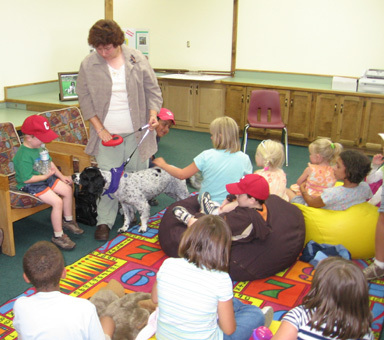
Published on May 04, 2016 06:02
April 25, 2016
Dog Parks Offer Exercise for Pets and People
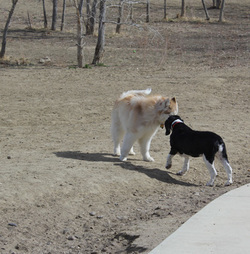 Many communities throughout the nation provide special parks for dogs to run and play. These dog parks offer activity and exercise for resident and visiting canines.
Many communities throughout the nation provide special parks for dogs to run and play. These dog parks offer activity and exercise for resident and visiting canines.With spring returning and summer on the horizon, there many days and weeks of wonderful get outdoors as well as traveling weather for you, your family, and your four-footed friends to enjoy. Knowing there are “pet playgrounds” in various locations can assist you and your furry companion.
Throughout the nation dog parks are popular. Many offer fenced-in security where dogs can safely run, play, and exercise. Fenced-in parks mean greater safety, an important concept in a dog owner's mind, especially for owners who travel with their furry friends. An enclosed park keeps dogs from running away and from running onto busy streets. Who wants to lose their dog while on vacation … or any other time?
More and more hotels are becoming pet-friendly, so having a dog park in a community is an added benefit for enticing travelers to stop and even to stay in that town. Such communities become more welcoming to visitors traveling with their dogs because dogs, like people, need to stretch their legs while on a journey.
Dog parks also provide socialization opportunities, again for both the dogs and their owners. While walking or playing with one's dog at a park, a person is likely to engage in conversation with other dog owners … and the dogs are apt to play with one another, running through the park or fetching a ball or other toy. Studies show people who have dogs are more outgoing and engage in more socializing because, well, like with our kids, we dog people like to talk about our furry family members!
Even communities that don’t have an actual enclosed dog park, some provide wonderful walking paths at which owners can give themselves and their furry friends good exercise.
A great resource to learn about pet-friendly places, such as hotels and parks (including dog parks) can be found here: http://www.bringfido.com/attraction/.
Published on April 25, 2016 08:56
April 15, 2016
Road Tripping with Your Pet
 As spring enters its full glory, with blooming flowers and budding trees, my thoughts turn to times of upcoming travel. This season, as well as summer and fall, are optimal road tripping times for people, and oftentimes those humans travel with their pets.
As spring enters its full glory, with blooming flowers and budding trees, my thoughts turn to times of upcoming travel. This season, as well as summer and fall, are optimal road tripping times for people, and oftentimes those humans travel with their pets.My husband and I look to take a vacation this summer to visit family back east, and we will be taking our springer/cocker mix, Mary, along for the L-O-N-G ride. As we make those plans, we’re considering taking in a baseball game. Since we can’t leave the dog in a hotel, we’ve turned to Rover.com to learn about pet sitters in the city that we plan to see the game. We’ve discovered a treasure in that website, as we’ve used it before, when going to a concert in another city and having Mary along on that journey. I recommend pet parents who travel, or who need pet sitting services in their own town, including boarding or daycare, visit Rover.com – the website is very helpful!
Another helpful site is BringFido.com. This site lists pet boarding/sitting services, hotels that allow pets, and even pet-friendly adventures in different locations. This, too, is a very helpful website for people who travel with their pets; the site even provides information on air traveling with pets.
Dog parks and rest areas provide great opportunities for both pet parents and their four-footed traveling companions to get out of the car, stretch, play, eat, and just break up the monotony of driving. Be sure to provide this respite for yourself and your pet.
Here are some other traveling trips for taking your pet on the road with you:
Pack well. Pack enough pet food for the trip – don't count on picking up your pet's favorite food along the journey as it may not be readily available. Other things to pack: food and water dishes, bedding, litter and litter box, leash, collar and tags, grooming supplies, a favorite toy, a first-aid kit, and any necessary medications. In addition, a container of drinking water for your pet should always be with you.Make sure your pet wears a sturdy collar with ID tags throughout the trip. The tags should have both your permanent address and telephone number. It is also very important to include a tag with the address and telephone number where you or a contact can be reached during your travels.Keep feeding to a minimum during travel. A light meal for your pet two to three hours before leaving is advised and give small amounts of water periodically in the hours before the trip. Also, resist the temptation to give your pet part of your burger and fries during your journey – upset tummies and cars don’t mesh well.Make sure your pet’s vaccinations are up-to-date and carry a health certificate with you. Additionally, if your pet doesn’t travel well in the car, you may want to ask your veterinarian for a prescription to help keep your furry friend calmer.Carry a current photograph of your pet with you. If your pet is lost during a trip, a photograph will make it easier for others to help you find your pet.No heads out the window! Although many pets find that sticking their head out the window is the best part of the road trip, it's not safe. Flying debris can easily injure your friend. And please -- NEVER travel with a pet in the back of a pickup truck. Some states have laws restricting such transport and it is always dangerous.Make frequent pit stops. Always provide frequent bathroom and exercise breaks. Most travel service areas have designated pet walking areas. Be sure to stay in this area particularly when you pet needs a potty break…and of course, bring along a bag to pick up after your furry friend. When outside your vehicle, make sure that your pet is always on a leash and wearing a collar with a permanent and temporary travel identification tag.Provide proper hydration. During your pit stops be sure to provide your dog/cat with some fresh water. Consider taking along ice cubes, which are easier on your pet than large amounts of water.Never leave your dog/cat unattended in a parked vehicle. On warm days, the temperature in your vehicle can rise to 120 degrees in minutes, even with the windows slightly open. In addition, an animal left alone in a vehicle is an open invitation to pet thieves.Be sure that your pet is safely restrained in your vehicle. Utilizing a pet safety harness or travel kennel are the best ways to keep your dog safe. Cats should be in carriers for their safety (and yours!). A harness not only protects your dog from injury, but also keeps them from distracting you as you drive. If your pet prefers a travel kennel, be sure it is well ventilated and stabilized. Many pet owners use vehicle barriers, particularly for larger pets. These are best suited for SUVs. No matter what method you choose, back seat travel is always safer for your pet.Whatever method you choose to properly restrain your pet in your vehicle, be sure to make their comfort a priority. Just as it's important for your "seat" to be comfortable for your long road trip, your pet's seat should be comfortable too. Typically their favorite blanket or travel bed will do the trick.
Following these ideas can make road tripping with your pet much more enjoyable and safe! Happy Road Tripping!
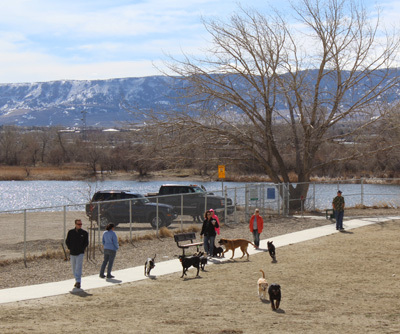
Published on April 15, 2016 10:05
April 7, 2016
Prevention of Cruelty to Animals Month
April is recognized by animal welfare organizations as Prevention of Cruelty to Animals Month. According to the American Society for the Prevention of Cruelty to Animals (ASPCA), which was chartered in April 1866, there are many signs that an animal might be being abused or neglected:Open wounds, signs of multiple healed wounds or an ongoing injury or illness that isn’t being treatedExtreme thinness or emaciationWeakness, limping or the inability to stand or walk normallyAn owner striking or otherwise physically abusing an animalSigns of inadequate grooming, such as extreme matting of fur, overgrown nails and dirty coatFur infested with fleas, ticks or other parasitesPets tied up alone outside for long periods of time without adequate food or water, or with food or water that is unsanitaryPets are kept outside in inclement weather without access to adequate shelterThere are other signs as well. To learn more, including how to report cruelty in your area, visit http://www.aspca.org/take-action/repo....
We can all be a voice for the voiceless and take a stand whenever we believe an animal is being subjected to cruelty and neglect. Let’s create a larger, caring community on behalf of animals, and put an end to cruelty.
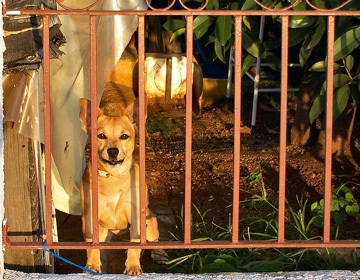
We can all be a voice for the voiceless and take a stand whenever we believe an animal is being subjected to cruelty and neglect. Let’s create a larger, caring community on behalf of animals, and put an end to cruelty.

Published on April 07, 2016 20:39
March 25, 2016
Poison Prevention Awareness for Pet Parents
 March is Poison Prevention Awareness Month, and this week is National Poison Prevention Week. Not only can humans, especially children, become poisoned due to chemicals, prescription drugs, and other substances, but so, too, can our pets. Antifreeze, weed killer, and other household products can be harmful, even deadly for dogs and cats.
March is Poison Prevention Awareness Month, and this week is National Poison Prevention Week. Not only can humans, especially children, become poisoned due to chemicals, prescription drugs, and other substances, but so, too, can our pets. Antifreeze, weed killer, and other household products can be harmful, even deadly for dogs and cats.Plants can also be dangerous, and with the Easter season upon us, it's a good time to remember that some species of lilies, including the Easter Lily, are toxic to cats, according to experts at the ASPCA (American Society for the Prevention of Cruelty to Animals). The Easter Rose is toxic to cats, dogs, and horses. The organization maintains a website showcasing the various plants which are poisonous to pets: http://www.aspca.org/pet-care/animal-poison-control
Did you know that some human foods can also be dangerous to our four-footed friends? Items such as grapes, raisins, onions, garlic, chocolate, and yeast dough can be harmful to our companion animals, and other types of human food can hurt livestock, such as goats and horses.
Consumer Affairs, an online free resource of consumer news and interactive tools, has partnered with the ASPCA and Dr. Justine Lee to create a special guide to help dog owners understand and learn more about the different, potentially dangerous human foods.
I spoke with Danielle Thompson, Content Marketing Specialist with Consumer Affairs, about the guide.
“It's a free resource.... (that) demonstrates what happens when your dog eats something it shouldn't and when you should worry and possibly call your vet,” she said. “It's an animated infographic.”
People who visit the site can select a certain food, click on it, and click through the site to better understand if the dog has consumed something that may be toxic; the information given can help the pet parent determine if this is an emergency situation.
“It's time saving, money saving,” she said.
Find this interactive tool at https://www.consumeraffairs.com/pets/pet-food/#dangerous-foods.
Consumer Affairs worked with the ASPCA to compile the top 10 most dangerous human foods for dogs, the ones the ASPCA receives the most calls about. The tool helps “de-mystify” the danger, Thompson said.
According to the ASPCA, nearly half of Americans have dogs as part of their household.
“We wanted to put together this tool in one place (to help pet parents),” Thompson said. “We are a leader in consumer advocacy – our mission is... to give consumers piece of mind. We love our pets and we want for them to be well... so we partnered with Dr. Lee to create this tool.”
Other pet-related information on the Consumer Affairs website includes a pet insurance guide and information about various pet foods. People may also find pet food and treat recalls on the site, Thompson said. Currently, the dangerous food guide is about those items that affect dogs. Content about foods harmful to cats may be forthcoming, Thompson said.
Between the ASPCA's Animal Poison Control website and the Consumer Affairs Dangerous Foods guide, we as pet guardians have wonderful resources at our fingertips to help protect our furry friends. If you're concerned that your pet has been poisoned, visit the two websites, contact your local veterinarian, or call the ASPCA's animal poison control hotline: 1-888-426-4435.
Again, the two websites are:
Consumer Affairs: https://www.consumeraffairs.com/pets/pet-food/#dangerous-foods
ASPCA Animal Poison Control: http://www.aspca.org/pet-care/animal-poison-control
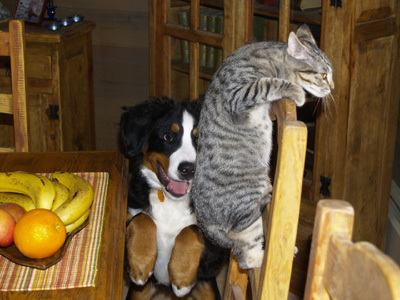
Published on March 25, 2016 08:16



